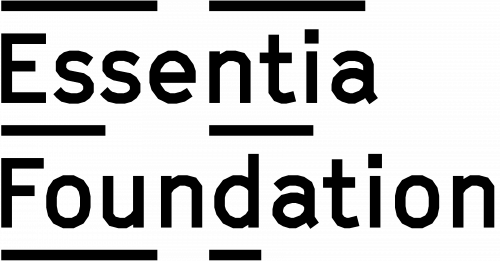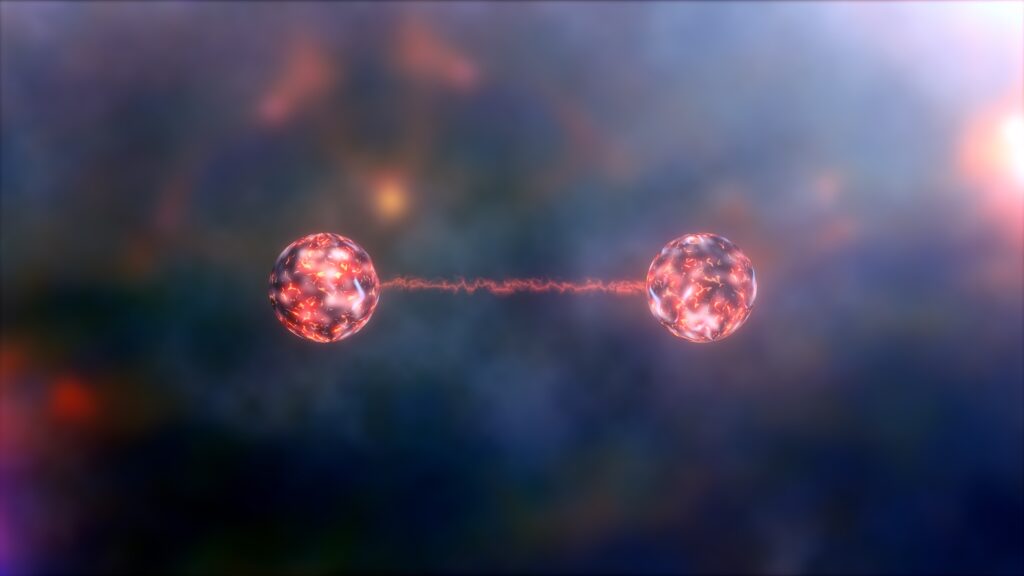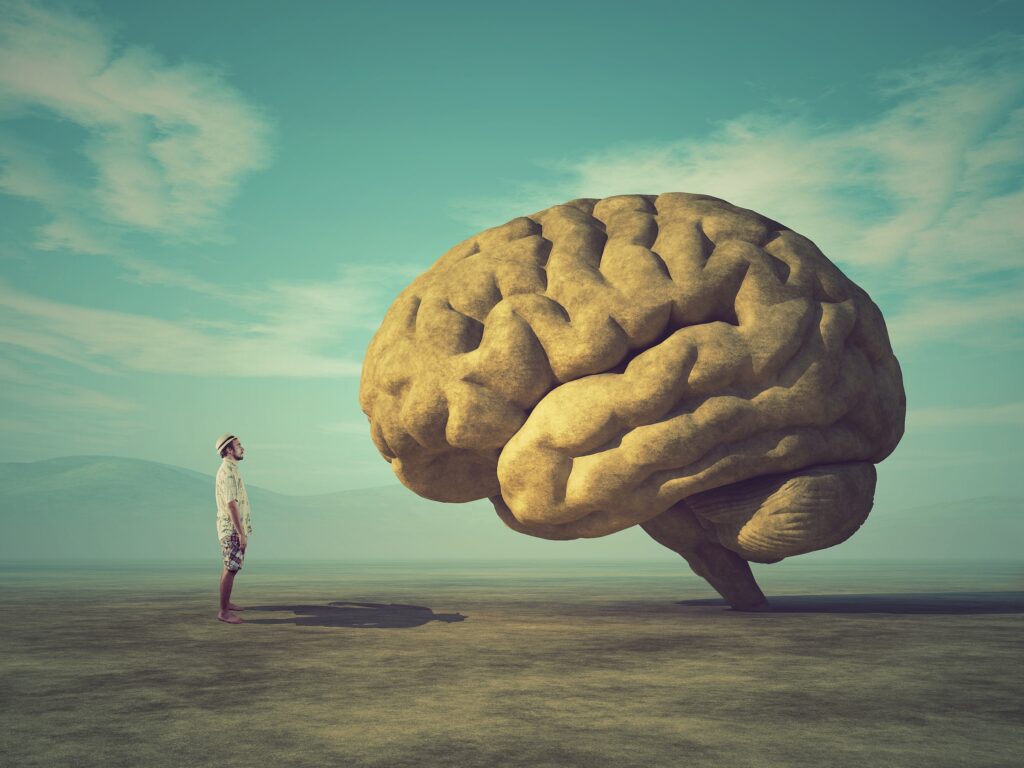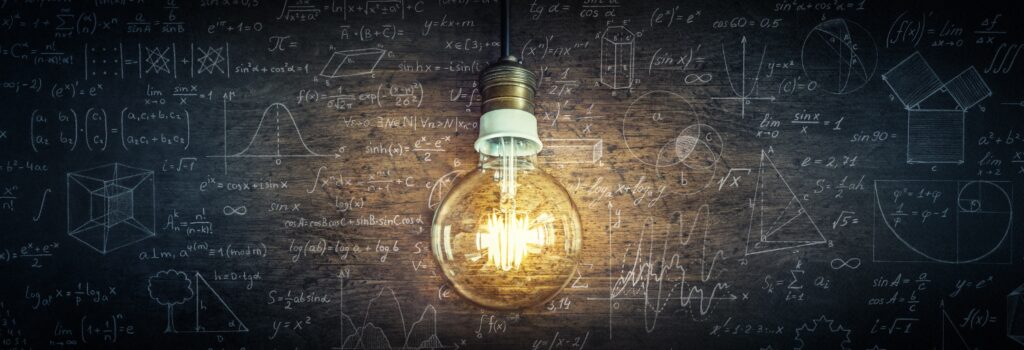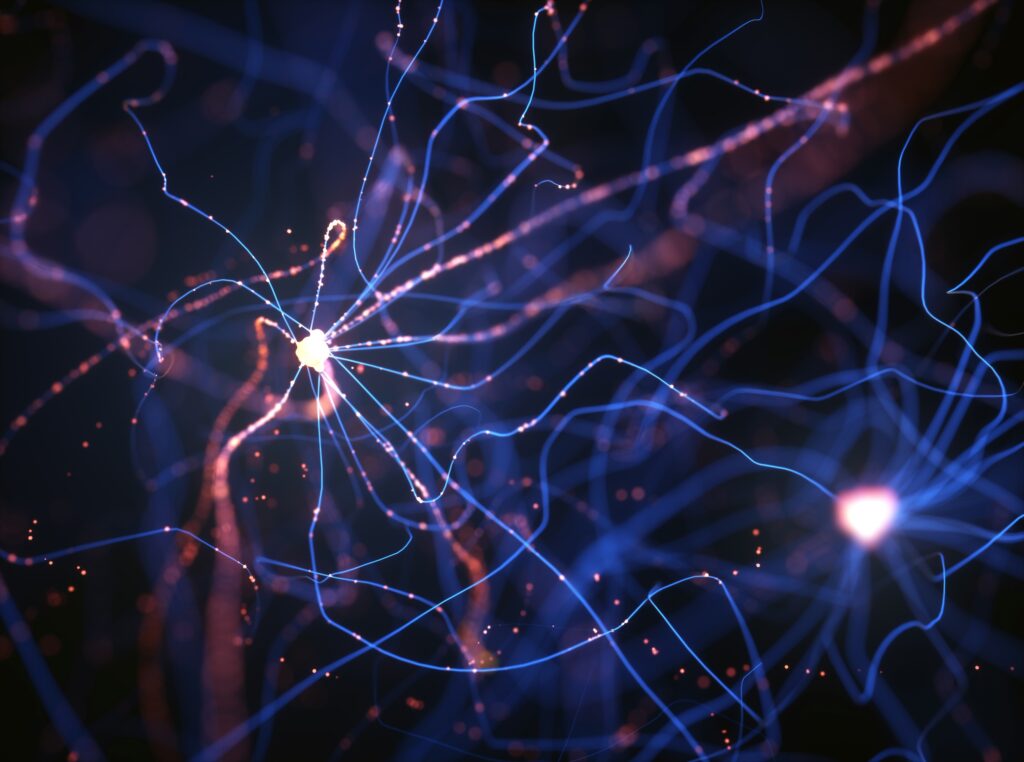Those who do not ‘see’ their own consciousness: can argument help?
Reading | Psychology
![]() Arthur Haswell, BA | 2025-03-07
Arthur Haswell, BA | 2025-03-07

Much of the discord in today’s philosophical debate on the nature of mind and reality arises not from argument, but from a peculiar mindset that prevents some from explicitly cognizing their own consciousness, argues Arthur Haswell. This mindset relates to Cotard’s syndrome (the rare delusion of being already dead) and necrophilia (a love for all that is mechanical and inanimate, as opposed to alive and organic). Haswell suggests that it may be as futile to argue against this mindset as it is useless to explain color to someone born blind.
A searing pang in the loins brings you to the doctor’s office. You explain that you need help, that something must be done. The doctor performs a comprehensive examination of your body and ascertains that you are perfectly healthy. Yes, you say, but even so, the pain is a problem in itself. You can’t live in agony. Isn’t there something that can relieve it? The doctor explains that the pain is not a problem because there is no such a thing as pain. He has never known pain himself and doesn’t believe that such a thing exists. For a few moments, you stare back at him, incredulous. How does one respond to such a claim? Keep this question in the back of your mind. We will return to it later.
The “hard problem of consciousness,” a term coined by David Chalmers, centres on the question of how experiences or mental phenomena can supervene on the physical, how they can be deduced from it, or how an entirely physicalist conception of the universe can account for phenomena that seem to be inherently immaterial, such as sadness, the ability to sense melody, an appreciation for meaning, the taste of wine, or even just the pain in one’s toe when one stubs it against the edge of a door. My view is that no such phenomena can be exhaustively understood in terms of the physical or the material. But in order to proceed, it is important to stress that I’m talking about a particular conception of the physical. I am not, for example, talking about hylomorphist or panpsychist conceptions of matter, which allow (albeit in very different ways) elements often considered subjective and experiential to be included as part of matter’s very nature.
The conception of the physical that I would like to focus on is one that could be characterised as “mathematico-nomic”[1], as the philosopher Philip Goff has termed it. This is where the physical is considered something that can be exhaustively understood in terms of mathematics and the laws of nature. While it may be reasonable in a trivial sense to conceive of the physical as mathematico-nomic and to accept that it can be fully described in mathematical and nomic terms, the problem comes when it is imagined that all of reality can exhaustively be understood in this fashion. Another way of putting it is that I’m sceptical of the idea that reality is wholly physical and the physical is wholly constituted of facts that “do not involve mentality or proto-mentality” [2].
But the problem with such analytical talk is that it is more slippery than it lets on. After all, can’t we imagine a future physics that counts consciousness as a law of nature? Perhaps, as Daniel Stoljar might suggest [3], this would contravene the spirit of physicalism. If physicalism can account for a future physics that accepts consciousness as somehow fundamental, how can it distinguish itself from seemingly contrary views, such as panpsychism? But, on the other hand, Galen Strawson argues that a conception of physicalism that accepts consciousness as fundamental should be considered “Real Physicalism” [4]. In light of such complexities and ambiguities, it might be better to elucidate a particular disposition, a way of attending to the world that discounts consciousness. We might refer to this disposition as “hylomania” (not to be confused with the aforementioned “hylomorphism”). An example of the term’s usage can be found in the following quote by the 17th-century philosopher Ralph Cudworth, and should provide a slight indication of its meaning:
All atheists being that blind Goddess Nature’s fanatics … are possessed with a certain kind of Madness, that may be called Pneumatophobia, that makes them have an irrational but desperate Abhorrence from Spirits or Incorporeal Substances, they being acted also, at the same time, with an Hylomania, whereby they madly dote upon Matter, and devoutly worship it, as the only Numen. [5]
Now let us bring hylomania out of its setting, allowing us to see how strange it seems in its bare form. To do so requires, in a sense, the construction of a straw man, an effigy of words. Yet, this effigy should strike the reader as distinctly recognizable, a reflection of the strange spirit currently possessing the world.
Cotard’s syndrome, the rare delusion of being already dead or non-existent, offers an intriguing parallel to hylomania. The neuroscientist Iain McGilchrist has surveyed the literature on this syndrome and shown that where a lesion has been traced in the patient’s brain, it has almost always been found in the right hemisphere [6]. McGilchrist also draws a connection between Cotard’s syndrome and “schizophrenic patients who believe themselves to be machines.” [7] Louis Sass, in Madness and Modernism, suggests a link between schizophrenia and brain lateralization that biases the left hemisphere [8], a view that McGilchrist provides a wealth of evidence for in The Master and His Emissary [9]. McGilchrist’s extensive surveys of psychiatric studies and neuroscientific literature have shown that those with an imbalance favouring the left hemisphere often perceive the world and themselves as mechanical, lifeless, meaningless, or lacking subjectivity [10, 11].
In his latest book, the neuroscientist Christof Koch relates Cotard’s syndrome with the “strident denigration or even outright denial of subjectivity” and experience that he suggests is dominant in “Anglo-American philosophy departments” [12]. We don’t have to look very far to find attitudes reminiscent of this mindset. Richard Dawkins famously described human beings as “lumbering robots” [13] and “survival machines—robot vehicles blindly programmed to preserve the selfish molecules known as genes,” a “truth” that he says fills him with astonishment [14]. Similarly, Daniel Dennett once remarked, “Yes, we have a soul. It’s just made of lots of tiny robots” [15]. Anil Seth, one of the most prominent voices in the contemporary consciousness discourse, insists that we are “beast machines.” He is open about drawing on Descartes’ views on animals and the philosopher’s “primary claim” that they lack “rational, spiritual, and conscious attributes” [16]. To further elucidate Descartes’ views on animals, he quotes the historian Wallace Shugg’s summary of them:
Without minds to direct their bodily movements or receive sensation, animals must be regarded as unthinking, unfeeling machines that move like clockwork. [17]
To make his position explicit, Seth asserts that his sympathies lie with the materialist philosopher Julien Offray de La Mettrie and his extension of Descartes’ beast machine hypothesis to humans [18]. Seth’s position on consciousness is slightly confusing, as he is willing to grant that qualia (a technical term that picks out aspects of experience) are not illusory, although he also believes that their true nature is mechanical. Regardless, in his writings it is tricky to imagine how he could display a keener inclination for turning rich and living worlds into the functional and robotic. Yet, his Being You achieved a level of mainstream popularity that is vanishingly rare among books on consciousness and received a great deal of praise from the popular press. This perhaps isn’t surprising, in light of the current zeitgeist.
René Guénon described the contemporary era as a “reign of quantity” [19], while David Bentley Hart calls it a “reign of pure syntax” [20]. It is an age in the grip of hylomania, in which Heidegger’s contention that “Being cannot be explained through entities” [21] has somehow ceased to resonate. Instead, we tend to consider the only veridical form of understanding as that which turns what it attends to into the “present-at-hand,” Heidegger’s term for the abstract and theoretical mode of world disclosure that one might fall into when performing an experiment. And as he outlines in The Question Concerning Technology, the domination of this mode of disclosure has led to the turning of the world and even ourselves into “standing reserve”; resources to be used, controlled, and exploited.
Perhaps another way to characterise the contemporary zeitgeist is as deeply necrophiliac. The social psychologist Erich Fromm, in The Heart of Man, describes the necrophile as someone who “loves all that does not grow, all that is mechanical. The necrophilous person is driven by the desire to transform the organic into the inorganic, to approach life mechanically, as if all living persons were things.” [22] He suggests that the necrophile “loves control, and in the act of controlling he kills life. He is deeply afraid of life, because it is disorderly and uncontrollable by its very nature” [23]. Fromm further observes that “features of a necrophilous orientation exist in all modern industrial societies, regardless of their respective political structures” [24], and that “intellectualization, quantification, abstractification, bureaucratization, and reification—the very characteristics of modern industrial society, when applied to people rather than to things, are not the principles of life but those of mechanics” [25].
There is value in arguments that detail the unsoundness of the hylomaniac worldview; arguments that expose why a purely quantitative understanding of reality can never be exhaustive, or why reality cannot solely be constituted of non-mental stuff, or why mind is not merely a function of matter. Many people become ardent hylomaniacs in their adolescence and complacent ones in adulthood, but can become unsure of their metaphysical presuppositions when confronted with arguments that highlight their absurdity. Then, after a period of uncertainty and disillusionment, they find themselves filled to the brim with spirit and the living world, with a fresh distance from the necrophilous perversion endemic to modern society. Some, however, seem to be incapable of making such a shift.
Let us return to the doctor’s office. You struggle to formulate a response to the doctor, who insists your references to pain cannot warrant analgesics, as there is nothing the word “pain” refers to besides physical injury, and he has checked you over and found nothing wrong. What should you say? Should you try to construct a rigorous formal argument that refutes his point? Or should you accept that this would likely be a waste of time? In King Lear, the characters gradually come to realise that Lear can no longer be treated in the same way as before. There is a turn, a shift in expectation. Many of us will have encountered similar shifts in our own lives. Perhaps we have supported an elderly relative with memory impairment and found that correcting repeated errors only causes distress, making it kinder to let the matter rest. Similarly, our interactions with children evolve as they grow. We wouldn’t discuss economics with a toddler, though we might speak simply about a recession with a ten-year-old. In short, our being-in-the-world is structured by our expectations of how the world will respond.
We don’t attempt to discuss the weather with a rock, for we have no expectation that we can communicate with it. We might coo at a dog, expecting it to revel in our attention, or point it towards a tasty morsel of food on the ground, but we won’t try to engage a labrador in conversation. This isn’t specifically about differences in cognition, but expectations about where dispositions and worlds overlap and where they don’t. A tetrachromat will only get so far in describing colours to a trichromat that the latter has never seen.
In formal logic, an argument is considered “valid” if its conclusion follows logically from its premises, regardless of whether those premises are true. However, an argument is only “sound” if its premises are true and its reasoning coherent. In an experiment conducted by Vadim Deglin and Marcel Kinsbourne [26], psychiatric patients underwent ECT to suppress one hemisphere of their brain before being asked to solve syllogisms. Patients with their right hemisphere suppressed failed to recognise that a valid syllogism could lead to a false conclusion. For example:
P1: All trees sink in water.
P2: Balsa is a tree.
Q: Does balsa sink in water?
Such patients responded along the lines of, “Yes, balsa sinks in water, because balsa is a tree, and all trees sink in water.” In other words, validity was sufficient for them, but soundness irrelevant. Regarding a syllogism that began with the premise “Winter is cold in tropical countries,” the following exchange ensued:
“It is cold in winter in Equador [sic] because Equador is a tropical country.”
“But you do know that it is not so.”
“But it is written here.”
I doubt many of us would spend long arguing with someone so disposed. If we encountered someone who insisted that winters in Ecuador are cold because that’s what the syllogism says, we might initially attempt to correct them. However, if they insisted that the syllogism must be true purely by virtue of its validity, purely because of its structural coherence, we might feel disinclined to continue the discussion. Similarly, in the case of the doctor who denies there is an experience of pain, we would probably disengage in a similar way, as there is no counter-argument that isn’t based on the fact that pain experiences exist. In contemporary philosophy of mind, many arguments against reductionist hylomania share this dynamic. They presuppose what the opposition denies. David Chalmers lets slip this truth in the introduction to The Conscious Mind:
This book may be of intellectual interest to those who think there is not much of a [hard] problem, but it is really intended for those who feel the [hard] problem in their bones. By now, we have a fairly good idea of the sort of theory we get if we assume there is no problem. In this work, I have tried to explore what follows given that there is a problem. The real argument of the book is that if one takes consciousness seriously, the position I lay out is where one should end up. [27]
Arguments that have been used to challenge hylomania (such as the conceivability argument, the inconceivability argument, the knowledge argument, and even my own dream triangle argument [28]) are all rooted in the facticity of consciousness and experience: that there is something it is like to be a subject [29] , that mental content exists, or that intentionality exists. Yet, like the patients who insisted on the truth of plainly unsound syllogisms, the hylomaniac constructs valid arguments to reinforce their worldview while forgetting their own Being, and is certain that they are correct.
It is perhaps strange to think that any carefully formulated argument could persuade someone to abandon the view that they are a collection of billions of mindless little robots or a lumbering automaton. The pertinent issue is not whether they are incorrect but whether it is futile to expect rigorous argumentation to change their minds. Such realisation might come through meditation or a chance moment of awakening, but it seems unlikely to arise from perfectly structured syllogisms or logical notations.
This is not to downplay the importance of such discourse. Many people remain unaware of the incoherence in their latent metaphysical assumptions. Once they recognise how their hylomaniac presuppositions conflict with the fact of subjectivity, they may be guided by syllogisms and formal arguments toward new horizons. For others, however, the reality of their own subjectivity remains obscured; like an old man searching for a pair of spectacles he is already wearing. As insubstantial as it may seem to say, there is perhaps a sense in which some people just don’t ‘get’ it.
What I am saying here may seem divisive or even alienating, but it is important to recognise that we all inhabit slightly different worlds. For some, the structure of their world may render them unable to notice something crucial when it comes to discourse on the nature of reality; namely, that there is that which notices. Debates about consciousness can often feel exasperating as we struggle to understand how our interlocutor perceives the world so differently. We tend to assume that opposing views arise either from disingenuousness or from well-founded reasoning we have yet to grasp. Yet, sometimes it may simply be about where worlds fail to intersect. Understanding that this is a possibility can make us more accepting of other people and ourselves. It may not help us to know who is correct, but it allows us to see that not everyone may be able to notice what might seem obvious to us.
I have often heard idealists express greater sympathy for eliminative materialism than for dualism, citing the former’s coherence and parsimony. But eliminative materialism achieves its coherence by eliminating mental and experiential content, thereby absolving itself of the need to account for such phenomena within a hylomaniac framework. To me, this position is far more untenable than a view that merely struggles with parsimony or coherence. A metaphysical framework grounded in premises that do not discount the mental is not just superior, but infinitely more plausible. Ultimately, this is where the most profound divide lies: not between dualists and monists, or reductionists and antireductionists, or Russellian panpsychists and idealists, but between those who notice, and those who do not.
Citations
[1] Goff, Philip. Consciousness and Fundamental Reality. Oxford University Press, 2017, p. 30.
[2] Goff, Consciousness and Fundamental Reality, p. 40.
[3] Stoljar, Daniel. Physicalism. Routledge, 2010.
[4] Strawson, Galen. Consciousness and Its Place in Nature. Imprint Academic, 2006, p. 8.
[5] Cudworth, Ralph. The True Intellectual System of the Universe. London, 1678, Bk. I, Ch. iii, Sect. xix, p. 134.
[6] McGilchrist, Iain. The Matter with Things: Our Brains, Our Delusions, and the Unmaking of the World. Perspectiva Press, 2021, p. 143.
[7] Ibid.
[8] Sass, Louis A. Madness and Modernism: Insanity in the Light of Modern Art, Literature, and Thought. Revised ed., Oxford University Press, 2017, pp. 322–328.
[9] McGilchrist, Iain. The Master and His Emissary: The Divided Brain and the Making of the Western World. Yale University Press, 2009.
[10] Ibid.
[11] McGilchrist, The Matter with Things.
[12] Koch, Christof. Then I Am Myself the World: What Consciousness Is and How to Expand It. Basic Books, 2024, p. 6.
[13] Dawkins, Richard. The Selfish Gene. Oxford University Press, 1989, p. 19.
[14] Ibid., p. v.
[15] Baggini, Julian. “Thinking Man: Daniel Dennett in Conversation.” Prospect Magazine, 4 Oct. 2023, http://www.prospectmagazine.co.uk/culture/63277/thinking-man-daniel-dennett-in-conversation. Accessed 29 Nov. 2024.
[16] Seth, Anil. Being You: A New Science of Consciousness. Faber & Faber, 2021, p. 172.
[17] Ibid., p. 173.
[18] Ibid., pp. 173–174.
[19] Guénon, René. The Reign of Quantity and the Signs of the Times. Translated from French, 2nd impression, Sophia Perennis, 2004.
[20] Hart, David Bentley. All Things Are Full of Gods. Yale University Press, 2024, p. 323.
[21] Heidegger, Martin. Being and Time. Translated by John Macquarrie and Edward Robinson, Blackwell, 1999, p. 251.
[22] Fromm, Erich. The Heart of Man: Its Genius for Good and Evil. American Mental Health Foundation, 2010, p. 19 [PDF].
[23] Ibid.
[24] Ibid., p. 30.
[25] Ibid., p. 29.
[26] Deglin, V. L., and Kinsbourne, M. “Divergent Thinking Styles of the Hemispheres: How Syllogisms Are Solved during Transitory Hemisphere Suppression.” Brain and Cognition, vol. 31, no. 3, 1996, pp. 285–307.
[27] Chalmers, David J. The Conscious Mind: In Search of a Fundamental Theory. Oxford University Press, 1996, p. xiii.
[28] Haswell, Arthur. “If You Dream of a Triangle, Where Does the Triangle Exist?” Essentia Foundation. [Online Article]. Available at: https://www.essentiafoundation.org/if-you-dream-of-a-triangle-where-does-the-triangle-exist/reading/. Accessed 29 November 2024.
[29] Nagel, Thomas. “What Is It Like to Be a Bat?” The Philosophical Review, vol. 83, no. 4, 1974, pp. 435–450. Published by Duke University Press. Stable URL: http://www.jstor.org/stable/2183914.
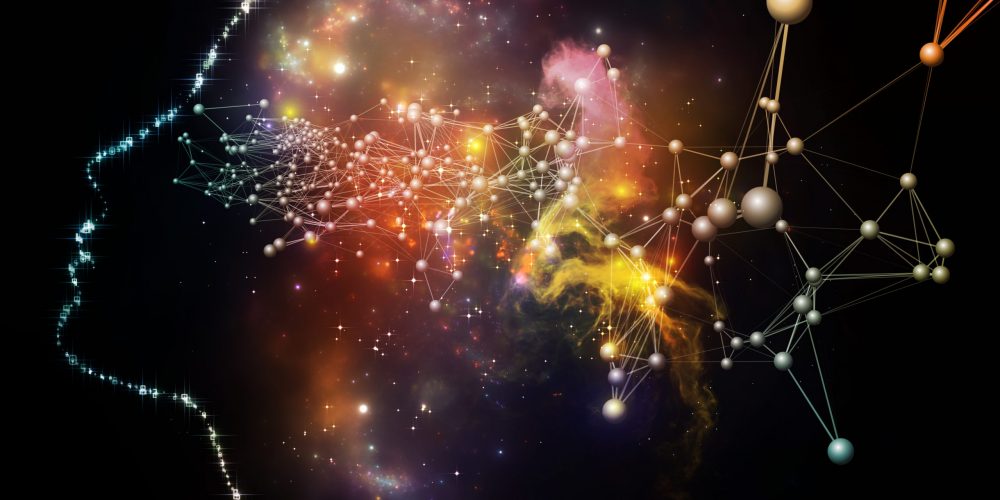
Essentia Foundation communicates, in an accessible but rigorous manner, the latest results in science and philosophy that point to the mental nature of reality. We are committed to strict, academic-level curation of the material we publish.
Recently published
Reading
Essays
Seeing
Videos
Let us build the future of our culture together
Essentia Foundation is a registered non-profit committed to making its content as accessible as possible. Therefore, we depend on contributions from people like you to continue to do our work. There are many ways to contribute.

